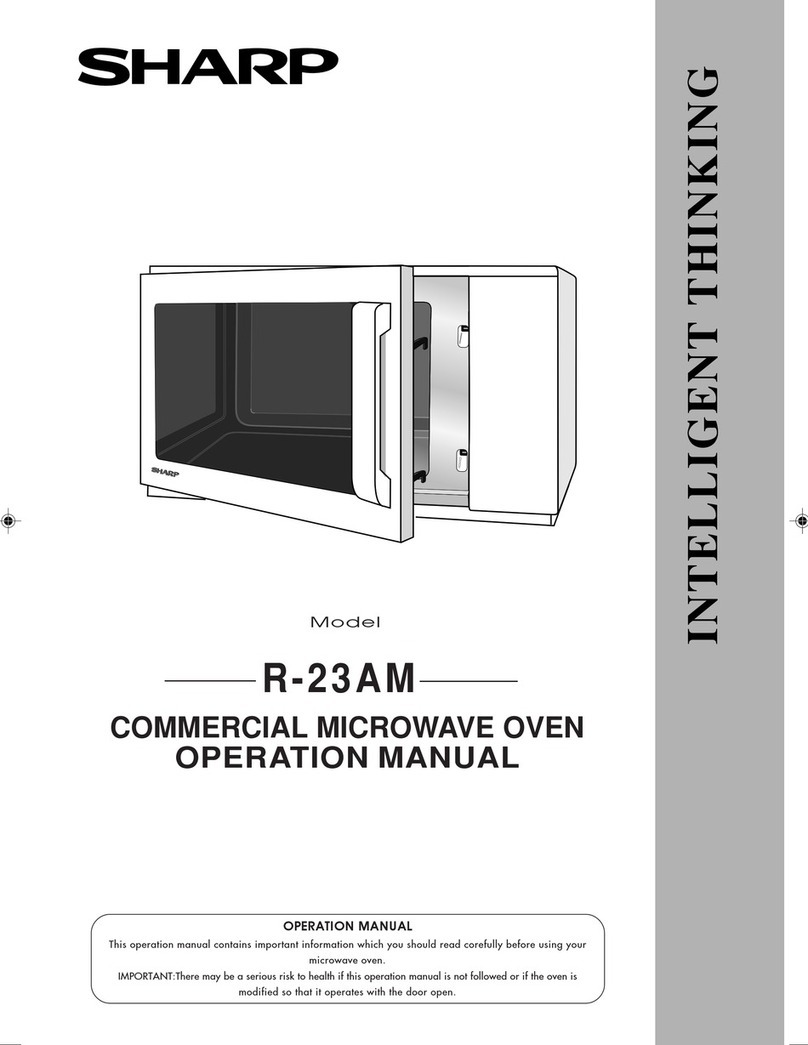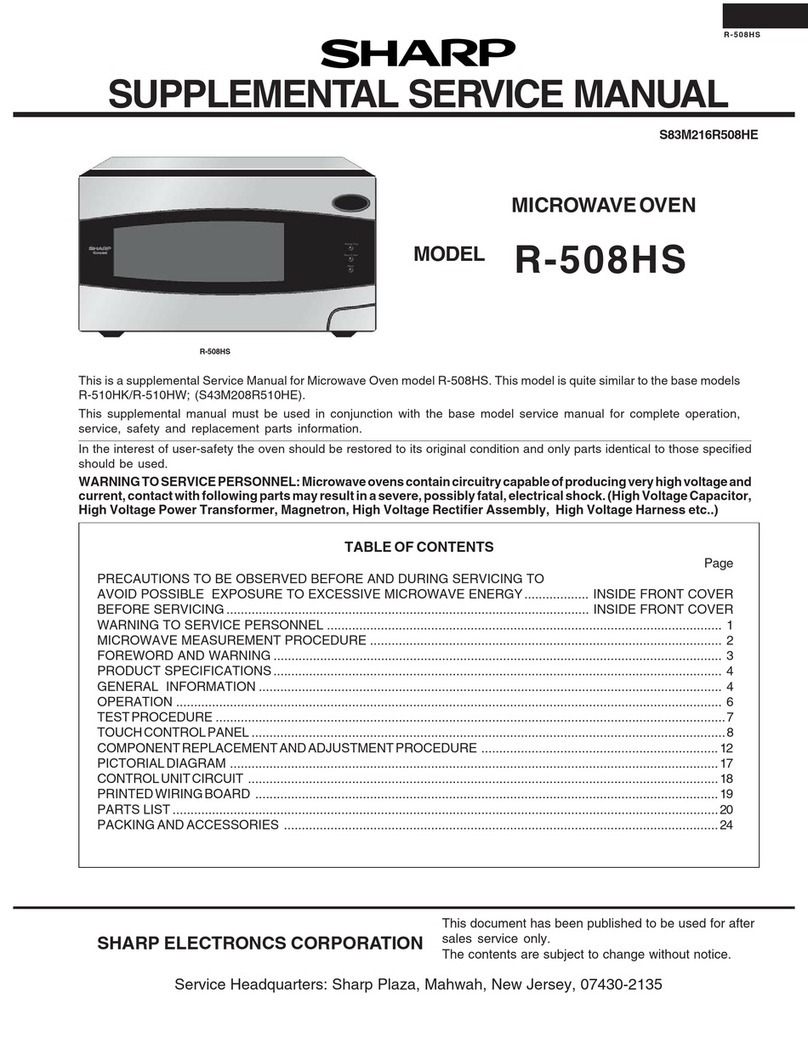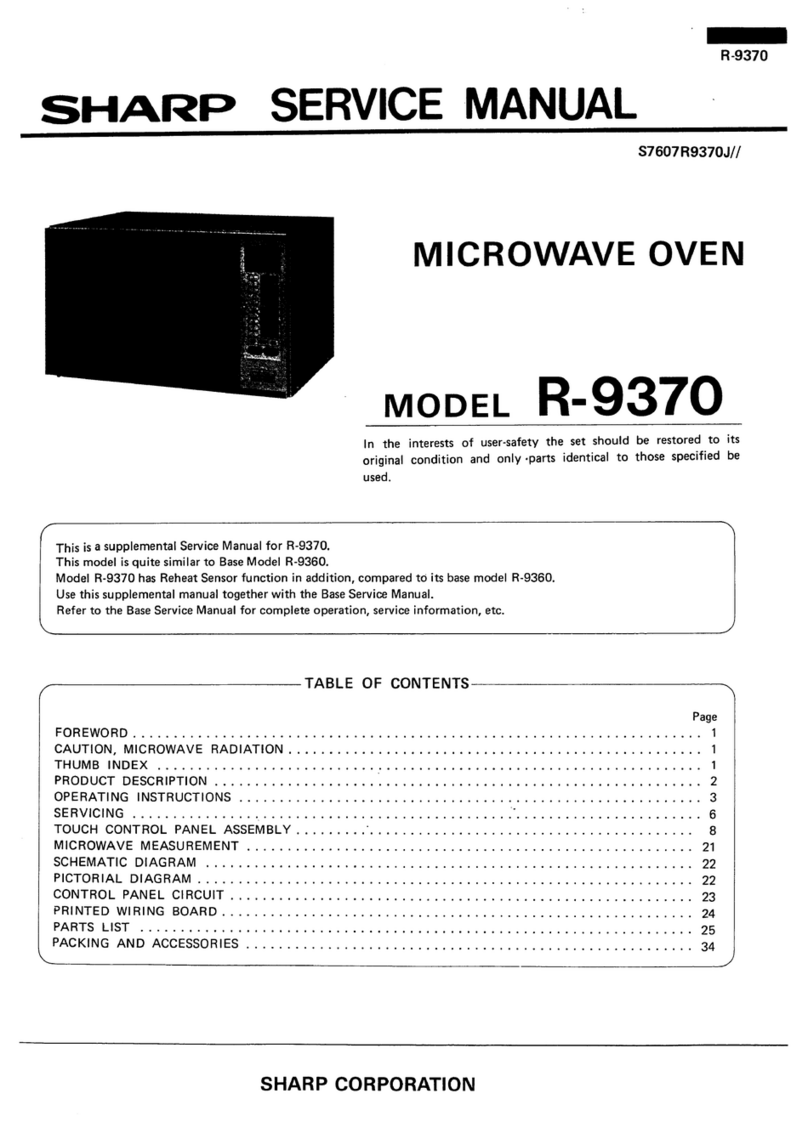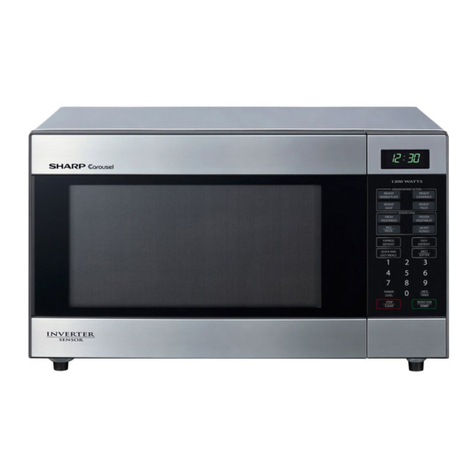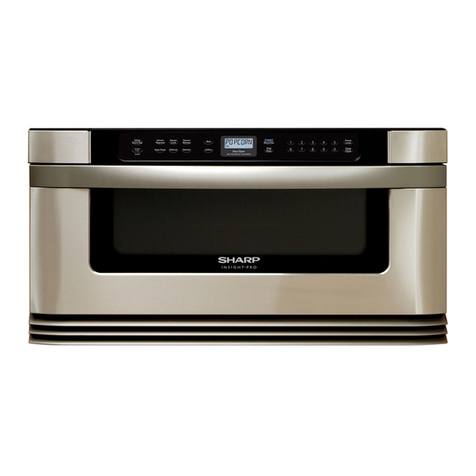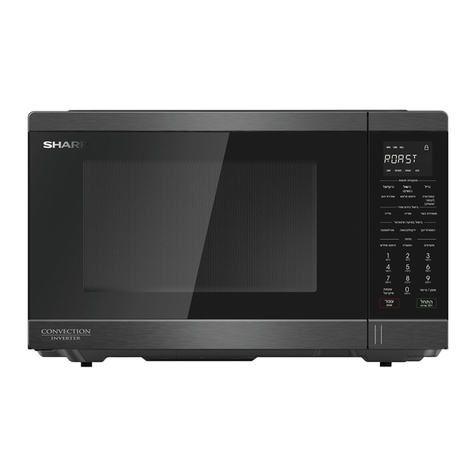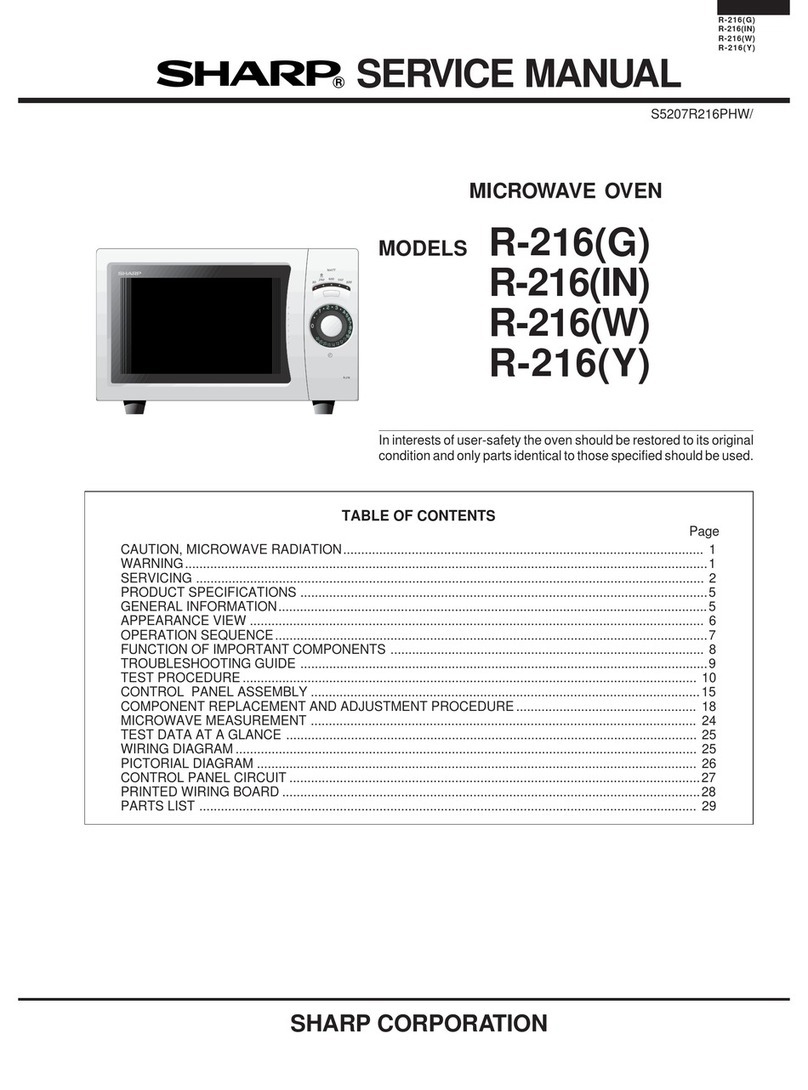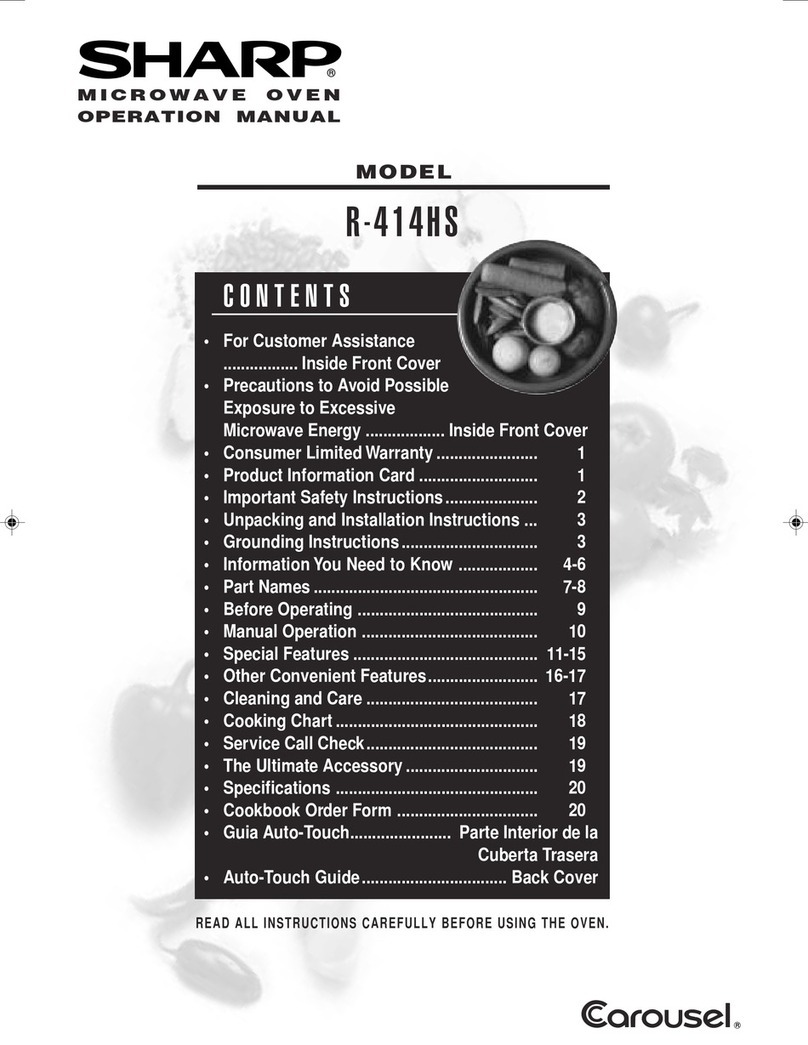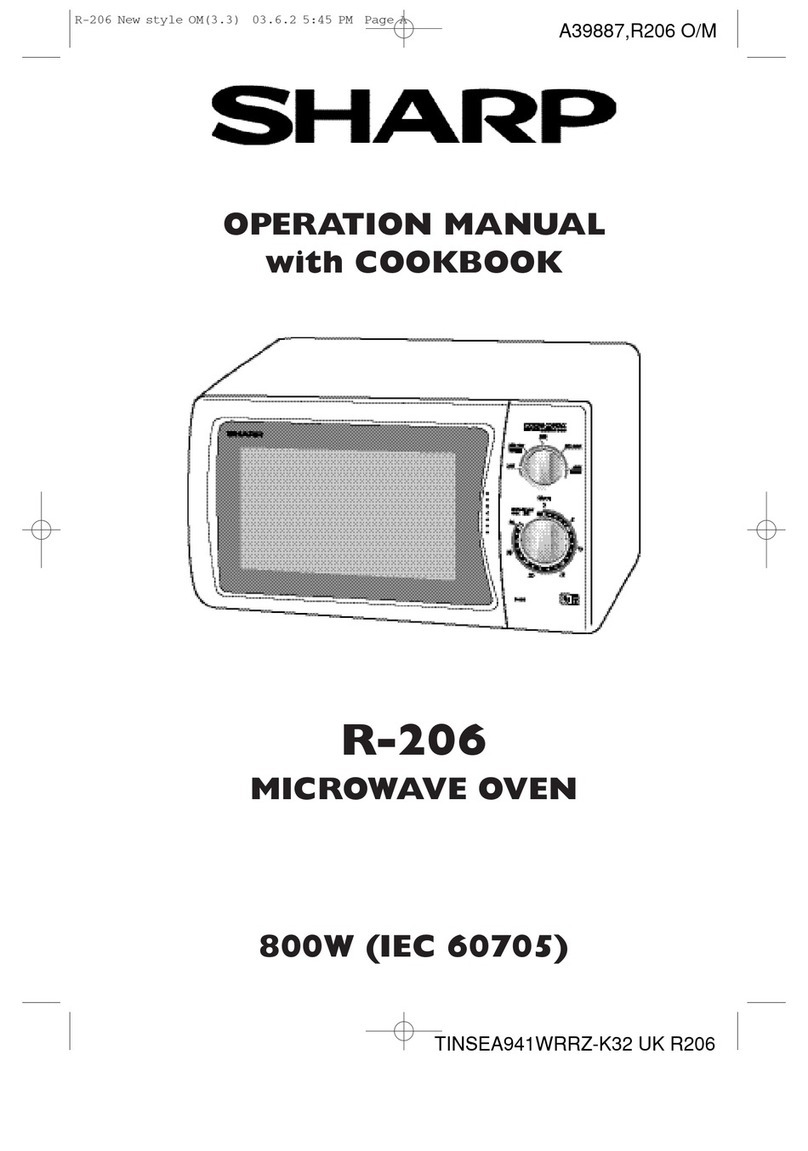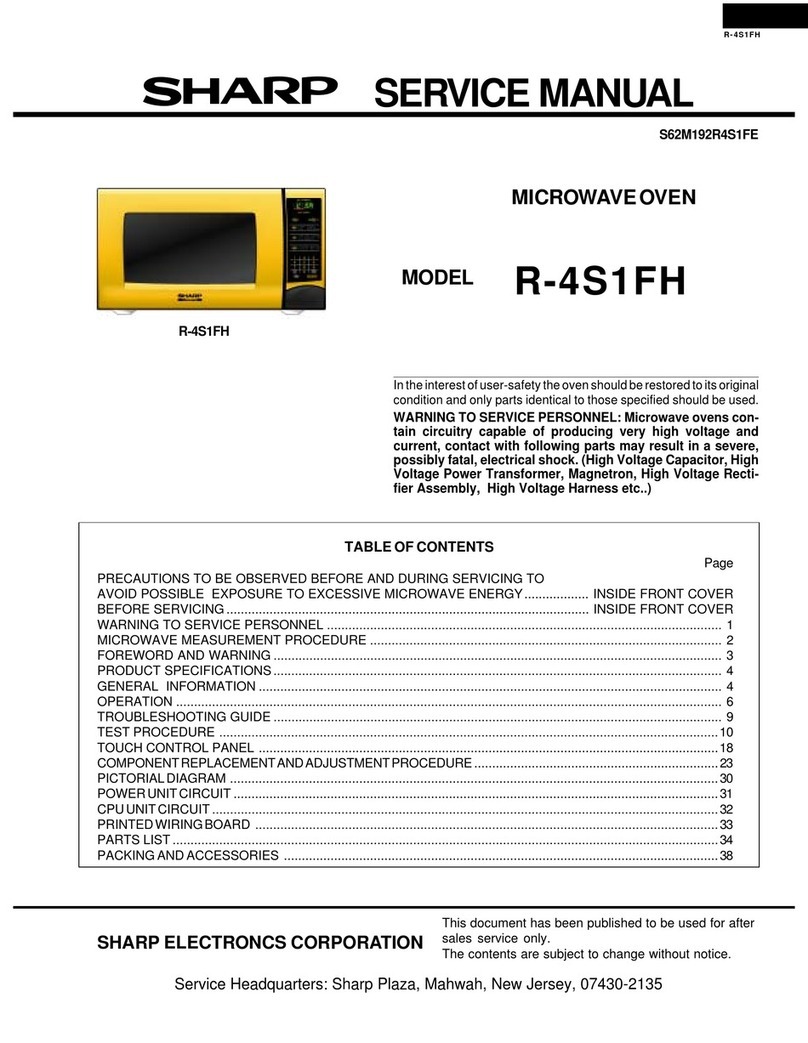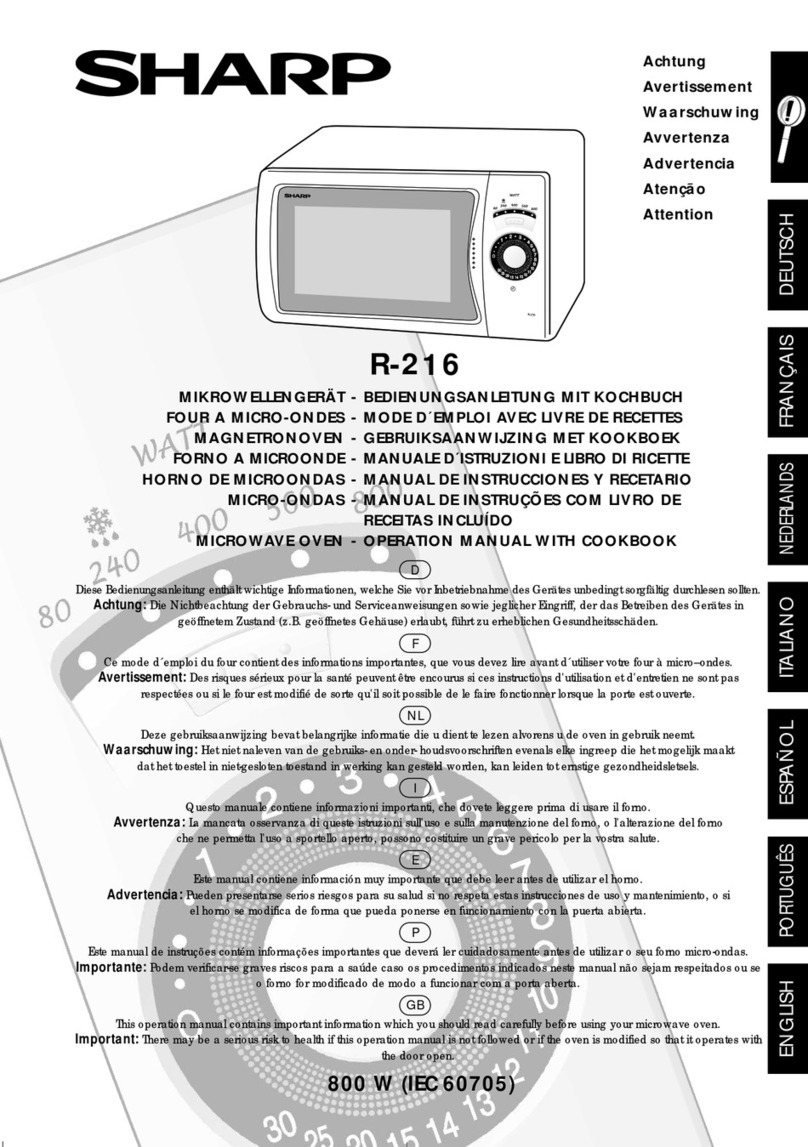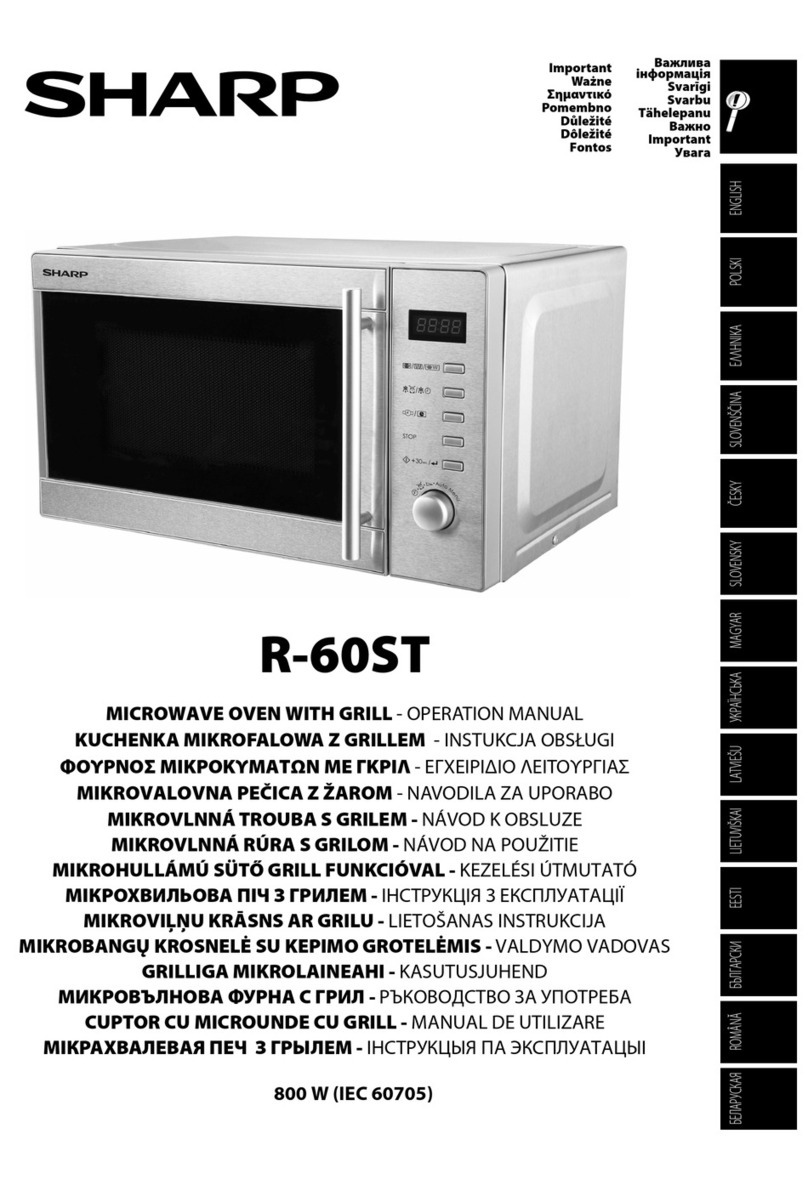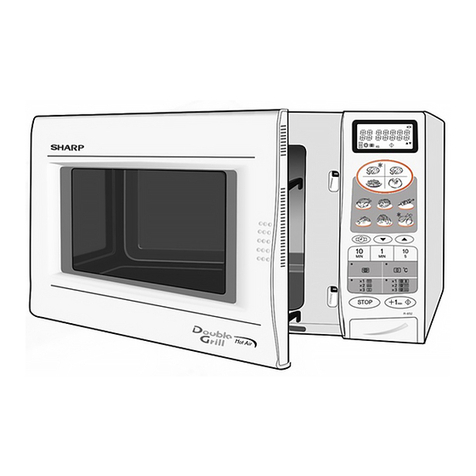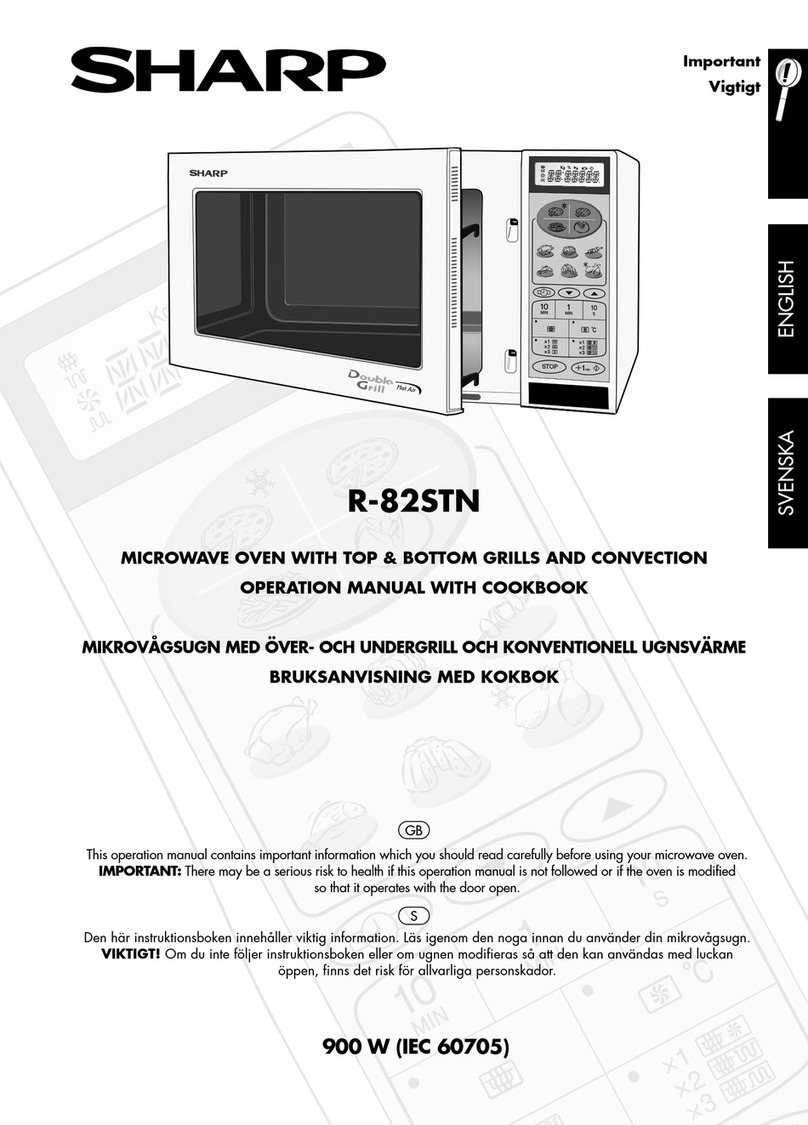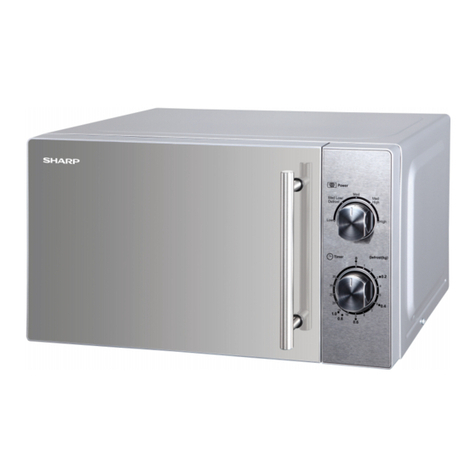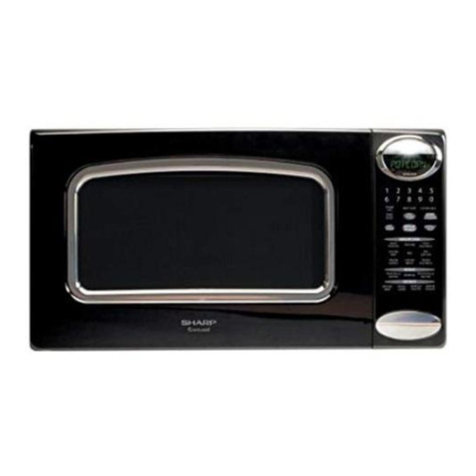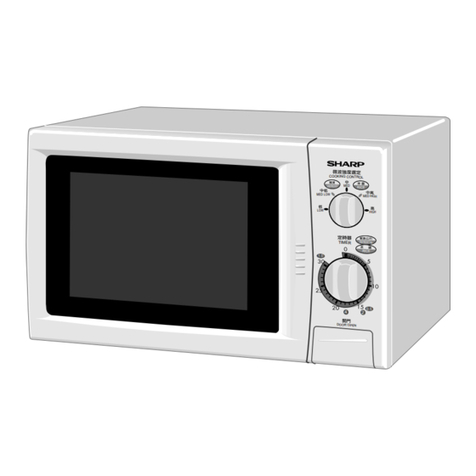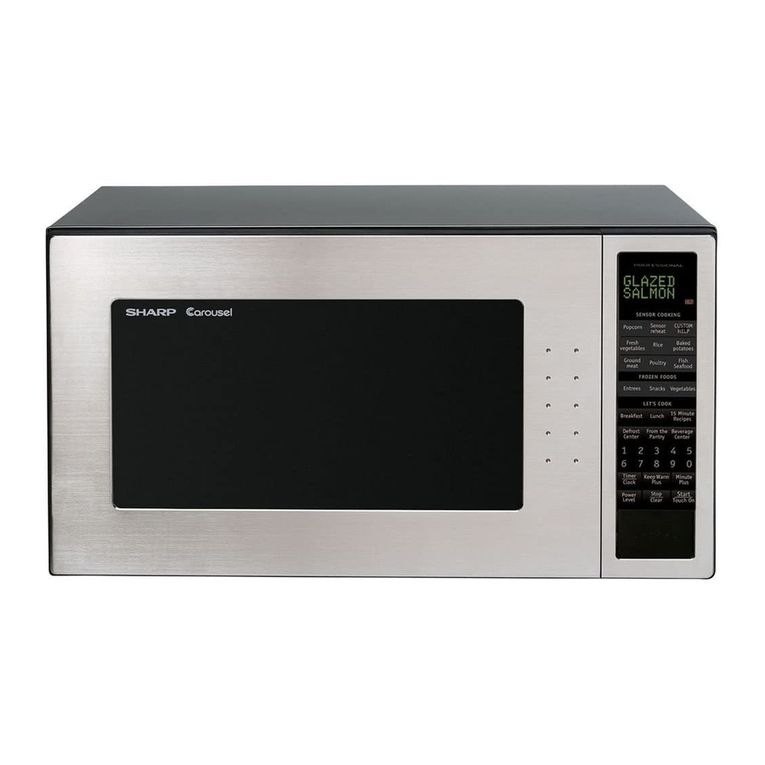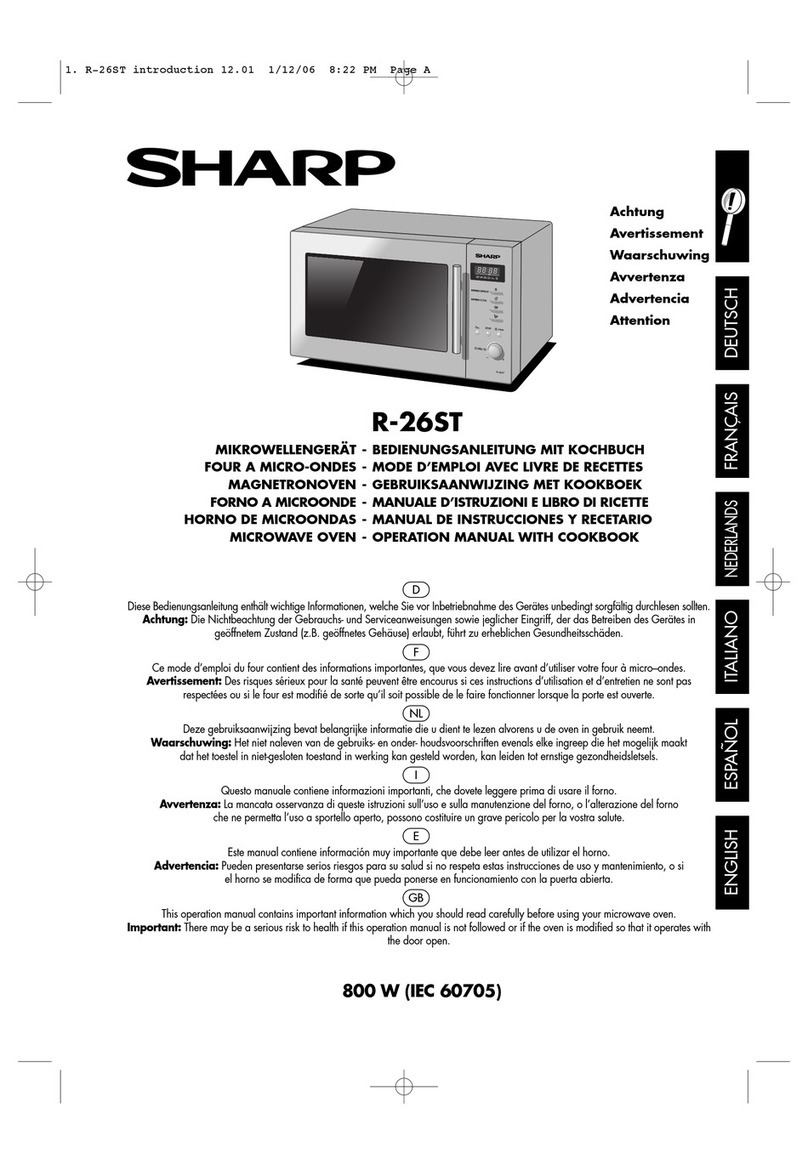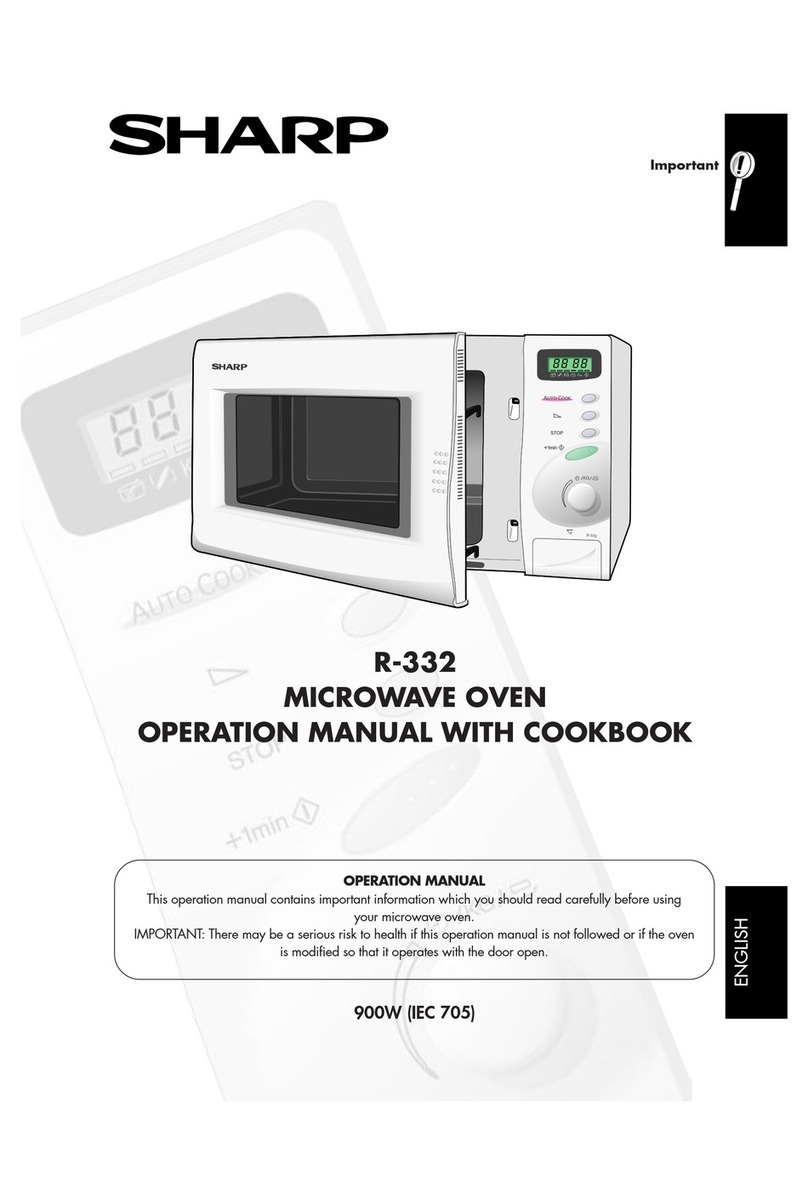R-210D
4
OPERATION SEQUENCE
OFF CONDITION
Closing the door activates all door interlock switches
(1st. latch switch, 2nd. latch switch and stop switch).
IMPORTANT
Whentheovendoorisclosed,themonitorswitchcontacts
(COM-NC) must be open.
Whenthemicrowaveovenispluggedinawalloutlet,rated
voltage is supplied to the noise filter and the control unit.
Figure O-1 on page 25
MICROWAVE COOKING CONDITION
HIGH COOKING
Select the power level HIGH by pressing the power level
button until the power level indicator indicates "HIGH".
And set the cooking time by rotating the Light Up Dial.
Function sequence
Figure O-2 on page 25
CONNECTED COMPONENTS RELAY
Oven lamp, Fan motor, Turntable motor RY1
Power transformer RY2
1. Ratedvoltage is suppliedtothe primary windingofthe
power transformer. The voltage is converted to about
3.3 volts A.C. output on the filament winding and high
voltage of approximately 2000 volts A.C. on the sec-
ondary winding.
2. The filament winding voltage (3.3 volts) heats the
magnetronfilamentandthehighvoltage(2000volts)is
sentto the voltage doublingcircuit, where it isdoubled
to negative voltage of approximately 4000 volts D.C..
3. The 2450 MHz microwave energy produced in the
magnetron generates a wave length of 12.24 cm. This
energyischannelledthroughthewaveguide(transport
channel)intotheovencavity,wherethe food is placed
to be cooked.
4. Whenthecookingtimeisup,asignaltoneisheardand
the relays RY1+RY2 go back to their home position.
The circuits to the oven lamp, power transformer, fan
motor and turntable motor are cut off.
5. When the door is opened during a cook cycle, the
switches come to the following condition.
CONDITION
DURING DOOR OPEN
SWITCH CONTACT COOKING
(NOCOOKING)
1st. latch switches COM-NO Closed Open
2nd. latch switch COM-NO Closed Open
Monitor switch COM-NC Open Closed
Stop switch COM-NO Closed Open
The circuits to the power transformer, fan motor, turn-
tablemotorandtheovenlamparecutoffwhenthe1st.
latch switch, 2nd. latch switch, and stop switch are
made open.
6. MONITOR SWITCH CIRCUIT
The monitor switch is mechanically controlled by oven
door, and monitors the operation of the 1st and 2nd.
latch switches.
6-1 When the oven door is opened during or after the
cycle of a cooking program, the 1st. latch and stop
switch must open their contacts first. After that the
contacts (COM-NC) of the monitor switch can be
closed and the contacts (COM-NO) of the 2nd. latch
switch can be opened.
6-2. When the oven door is closed, the contacts (COM-
NC) of the monitor switch must be opened and the
contacts (COM-NO) of the 2nd. latch switch must be
closed. After that the contacts of the 1st. latch switch
and stop switch are closed.
6-3. Whentheovendoorisopenedandthecontactsofthe
1st and 2nd latch switches remain closed. The fuse
M8A will blow, because the monitor switch is closed
and a short circuit is caused.
MEDIUM HIGH, MEDIUM, MEDIUM LOW, LOW
COOKING
When the microwave oven is preset for variable cooking
power, rated voltage is supplied to the power transformer
intermittently within a 27-second time base through the
relay contact which is coupled with the current-limiting
relay. The following levels of microwave power are given.
SETTING;
NOTE: The ON/OFF time ratio does not exactly corre-
spond to the percentage of microwave power,
because approx. 2 seconds are needed for heat-
ing up the magnetron filament.
HIGH 27 sec. ON
MEDIUM HIGH Approx. 70%
21 sec. ON 6 sec. OFF
12 sec. OFF
18 sec. OFF
22 sec. OFF
MEDIUM Approx. 50%
15 sec. ON
MEDIUM LOW Approx. 30%
9 sec. ON
LOW Approx. 10%
5 sec. ON
